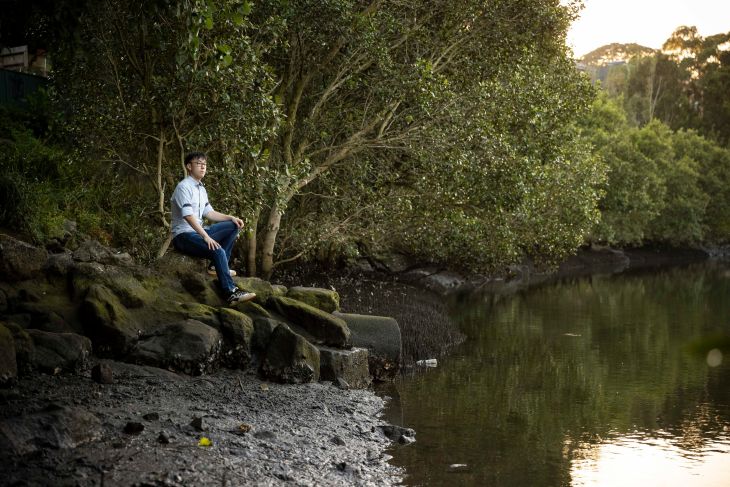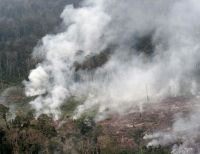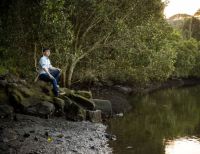
A Sydney red gum or angophora. Image: Luisa Low, University of Sydney
Out of all the species, Sydney red gums – also known as angophora – and blueberry ash were the best at slope reinforcement. Zhu said: “The robust taproot system of the Sydney red gum – where a dominant root takes hold of soil – provides an anchor against erosion. Its elastic roots also help it penetrate stiff soils, making it suitable for rocky sites or areas with deep groundwater. These conditions encourage it to lay down deep roots which further helps strengthen erosion control.”
“Blueberry ash trees have a thick, vertical, heart shaped root system and, out of all the trees I studied, were the most resistant to being pulled out. They also provide berries for native birds like the regent bowerbird,” he said.
While using trees to stabilise soil on shallow slopes has long been understood to be effective, few studies have focused on Australian species and conditions. According to Geoscience Australia data, incidences of landslides and heavy erosion increased by 190 percent in the period between 2004–2017, compared with 1990–2003.
The role of precipitation can also be difficult to understand in experimental settings. Mr Zhu said: “It can be very hard to replicate wet conditions in field studies because it’s hard to control the water content, but what we do know is landslides are more likely to occur during heavy rainfall.”
The most at-risk areas
Cut out motorways, reclaimed or disused mine pits and riverbanks were most at risk of erosion and landslide during higher precipitation. Zhu believes state governments should prioritise reinforcing slopes with trees alongside state-owned assets and major river systems, and councils should prioritise in-filling terrain on public land and around housing with native species.
“Sometimes, nature offers the best solution. Prioritising native planting would be a quicker way to achieve the NSW Government’s 2036 green cover index, opening new sites for regreening that directly benefit critical infrastructure, homes and crucial river systems,” he said.
Homeowners, too, should consider planting these native trees and shrubs to protect their properties against landslide risk, and reconsider cutting them down where possible.
“If you look at a place like Sydney, it is hilly and craggy, with multiple river systems including the Hawkesbury, Parramatta and Nepean,” Zhu said. “You only need to look around the harbour to see that many houses are built on slopes and vertical terrain, which could be at heightened risk of landslide or slip with increased rain patterns due to climate change. So, instead of cutting down that angophora or blueberry ash for the view, remember it might be helping to strengthen a site,” he said.














